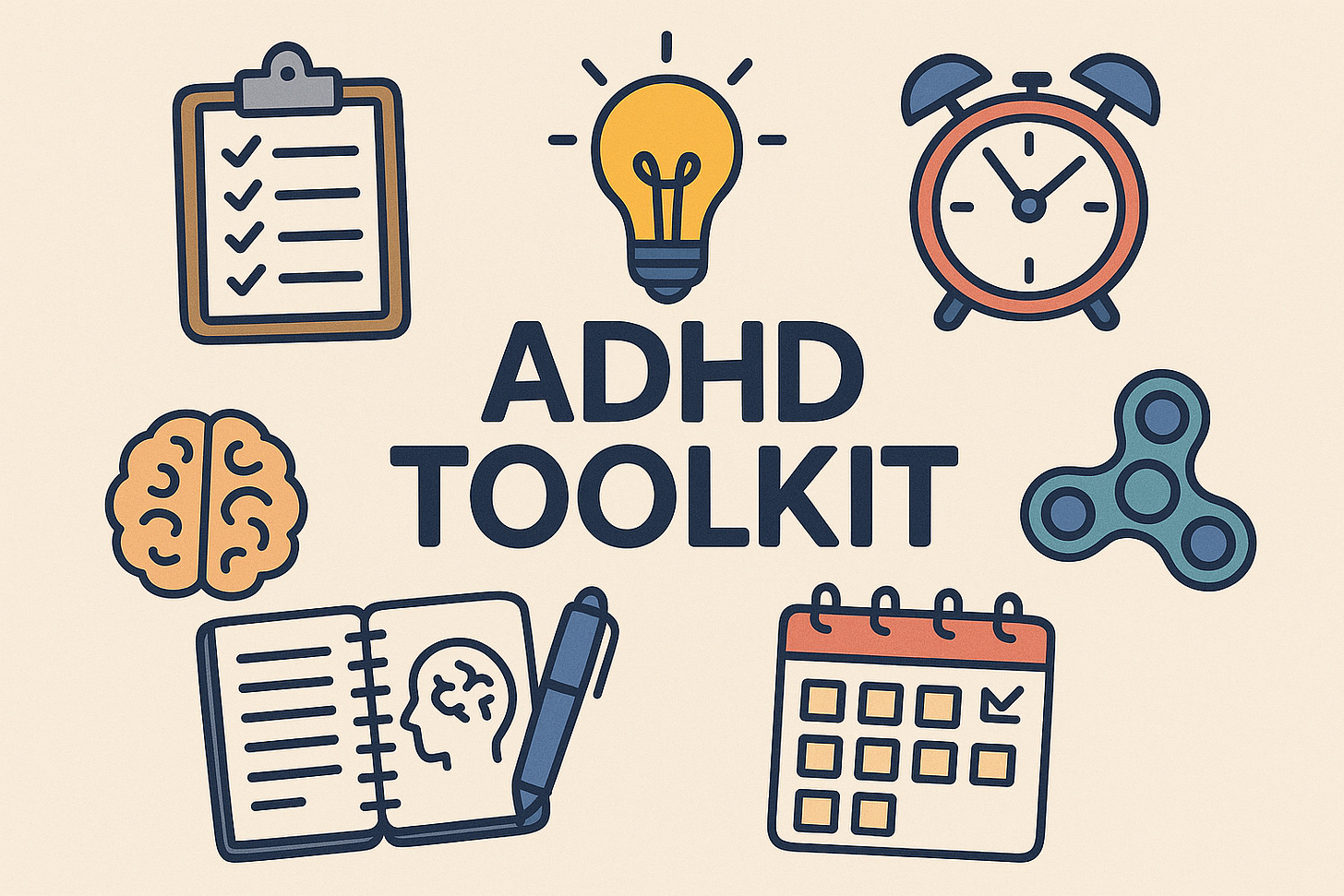TOOLKIT: Building DBT Practice That Actually Works: Reimagining Consistency for ADHD Brains
A Confession About "Daily Practice"
Let's start with some honesty about the phrase that might make your stomach drop: "daily practice." If you've ever tried to maintain a consistent DBT skills routine with ADHD, you know the cycle. Week one: enthusiasm, colour-coded schedules, maybe even a special notebook. Week two: missing a day, then two, shame creeping in. Week three: the notebook is somewhere under that pile of papers you meant to sort through.
Here's what I've come to understand: the problem isn't our commitment or our capability. The problem is that we're trying to force our beautifully chaotic brains into a framework designed for neurotypical consistency. We're attempting to build routines on foundations that don't match our neurological architecture.
What if we stopped trying to be "consistent" in the traditional sense and started building practice routines that honour how our brains actually work? What if sustainability doesn't mean doing the same thing every day but creating systems flexible enough to catch us wherever we are?
Redefining Consistency: From Linear to Cyclical
Traditional consistency means doing something the same way, at the same time, every single day. It's linear, predictable, unwavering. For ADHD brains, this definition of consistency is often a setup for failure.
Our consistency might look more like:
Intense engagement for three days, then a break, then returning
Different practices for different energy states
Seasonal or monthly patterns rather than daily ones
Bursts of hyperfocus on one skill, then shifting to another
Consistency in intention even when execution varies wildly
This isn't inconsistency – it's a different rhythm. Once we recognise our patterns rather than fighting them, we can build practice architectures that actually sustain us.
Keep reading with a 7-day free trial
Subscribe to ADHDer.net to keep reading this post and get 7 days of free access to the full post archives.

